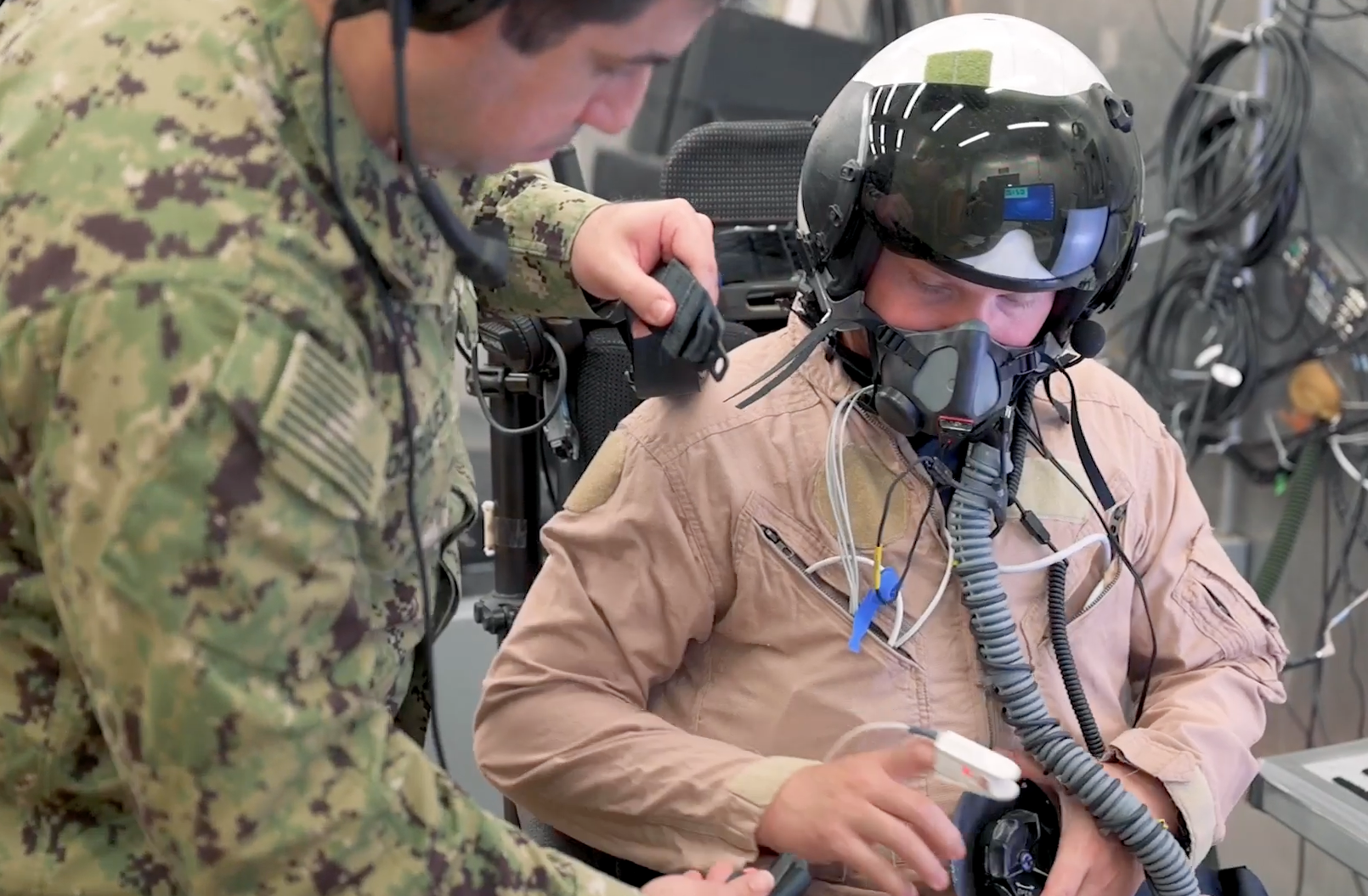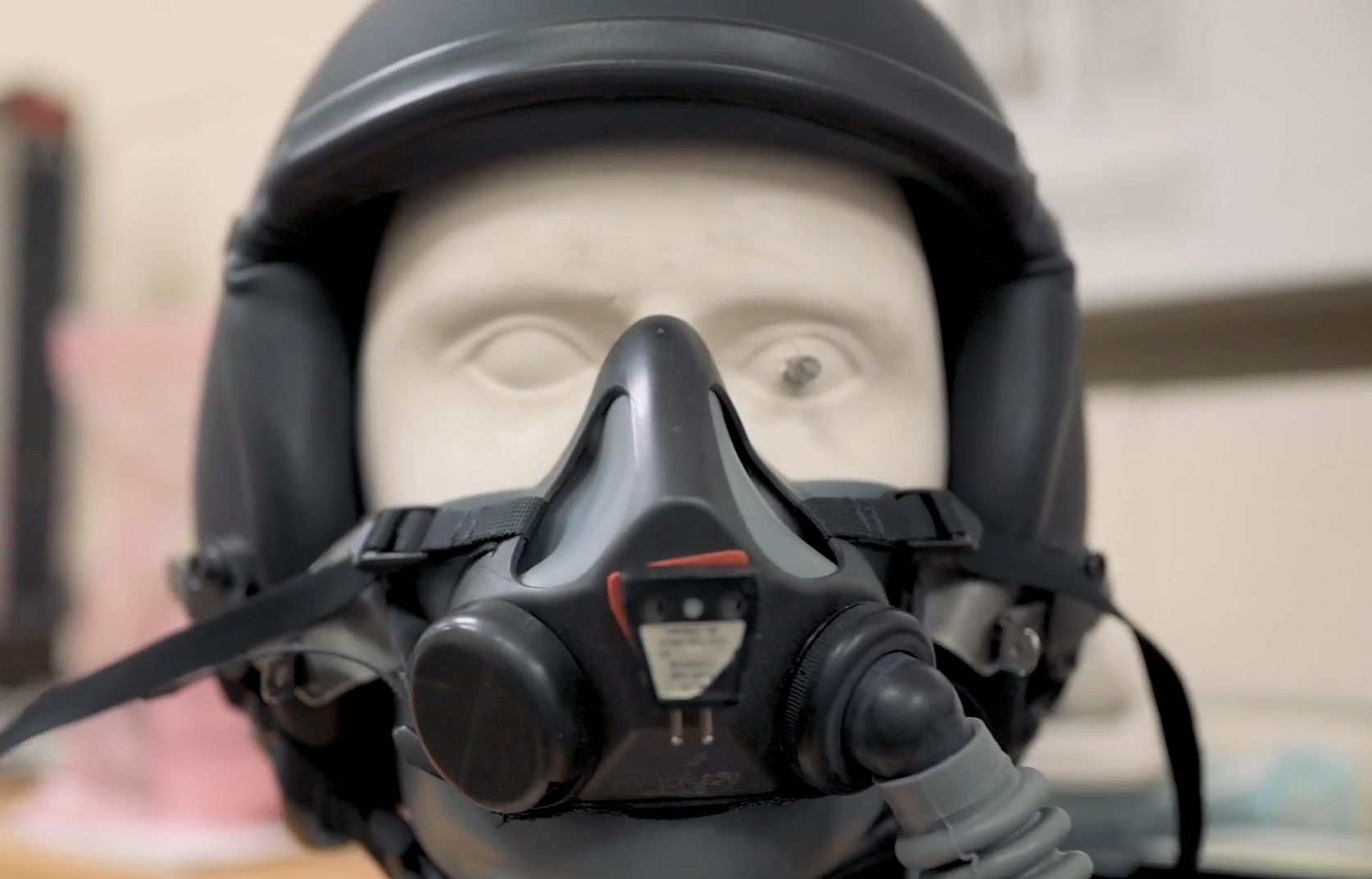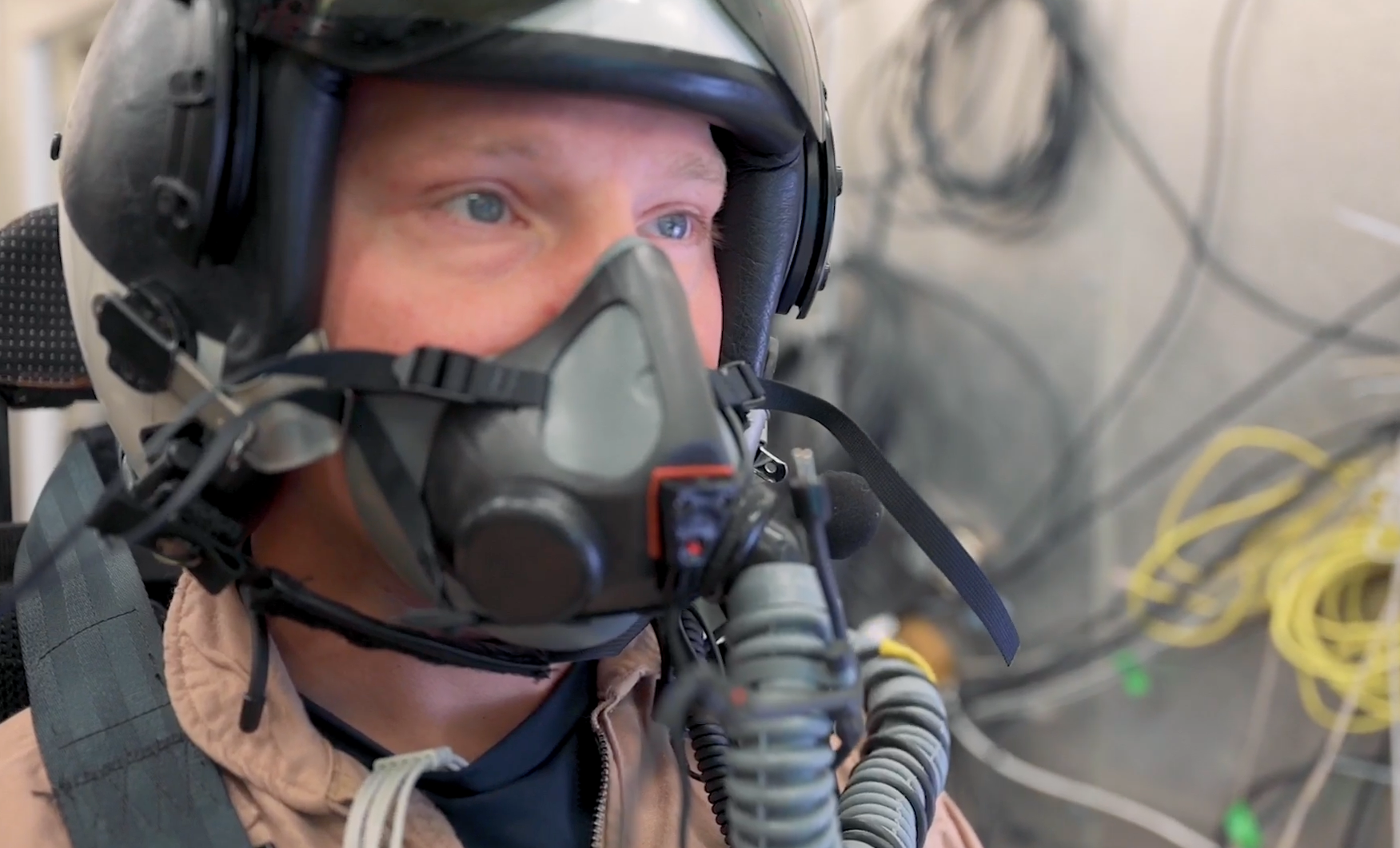
NAVAL AIR STATION PATUXENT RIVER, Md. – What aircraft a Navy pilot could fly might come down to pure genetics – the range of motion of their thumb or how high their eye-line is when they sit.
The service tests these and a myriad of other physical attributes to determine who qualifies to fly and with what platform they should be paired.
The current guidelines that the measurements are compared to are based on data collected in 1964 before women could be naval aviators and when people, in general, were smaller. While the guidelines have been updated based on Department of Defense data, the Navy now wants to collect its own measurements to provide an updated picture of the physical characteristics of Navy and Marine aviators.
The Naval Air Warfare Center Aircraft Division (NAWCAD) aims to collect data from 4,400 na aviators – including women, minority populations and some younger aviation candidates. This data can then go on to help the Navy and industry create equipment and aircraft that will fit aviators better, Lori Basham, principal investigator on the study, told USNI News in an interview last month.
Right now, there are issues with equipment fitting or having enough sizes in stock, including critical items needed for safety, Basham said.
“There’s a lot of different implications,” she said. “There’s the cost implications, their safety and flight implications. I’d say retention, recruitment, all of that is impacted by the work that we’re going to be doing.”
The goal is to be able to provide new requirements that will help acquisition, including new seating, safety gear and even aircraft, Basham said.
The study investigators will take 32 manual measurements from aviators. Then, using the Department of Defense’s standardized anthropometry the researchers can do statistical analysis and matching to supplement.
Each participant will fill out a survey, which allows the team to gather demographic data and information on flight hours, what aircraft each flies, and whether the service members have struggled to get proper equipment before, Basham said. There will also be pain and injury questionnaires and inquiries to help the researchers look at a pilot’s range of motion.
Each aviator will then have their foreheads, hips, shoulders, hands, and bony parts of the body landmarked, which allows the researchers to have points of reference for each measurement.
By landmarking, which is when one of the researchers marks the bony parts of a body with a black pen, such as the center of the forehead or top of the hip, the anthropometric team can properly measure someone’s hand length or waist and father other measurements.
Each station involves different measurements. One might collect a person’s reach and depths, while another will include head circumference.

There’s also range of motion scanning and a body scanner that produces a 3D virtual model of each person.
It is similar to what aviators go through when they are in flight school, said Lt. Jennifer Knapp, the military liaison for the study. When aviators arrive at Pensacola, they get measured and then receive a report that lists what aircraft they cannot fly, Knapp said.
It can be discouraging, especially for those who had their hearts set on a platform only to find out that they do not qualify, Knapp said. One area that restricts many aviators is weight.
“The ejection seats require a certain amount of weight to be able to effectively get them out of the aircraft, and ensure that they can then go through the safety protocols, survival protocol after they eject,” she said. “So if you don’t meet a certain weight requirement … you then aren’t eligible to fly in certain platforms. That also can include trainer aircraft as well. You’d have to be qualified to train in the aircraft to then go fly the aircraft.”
Unlike what aviators go through at Pensacola, the NAWCAD study will not tell them what they cannot fly. Instead, the researchers will take the data back for analysis.
“It’s just to keep in mind that the population is always changing,” Knapp said. “We have evolved. Humans have evolved since the 1960s. And we want to capture the current picture.”
Knapp’s role in the study is to help the anthropometric team gain access to sailors and Marines.
She hopes to use her own experience of knowing what it’s like to have equipment not always fit perfectly to encourage Marines and sailors to participate.
“So the data from this study will affect so much down to the end user,” she said. “It’s not just to affect industry. It’s not just to affect our partnerships, but it goes to the end user. It’s to ensure that everyone who walks through the door into their squadron has access to survival gear that fits, access to uniforms that fit, boots that fit. And they’re able to get those uniform pieces readily available and get out and do their job effectively.”

And it will help future aviators as well, as the data will go on to help inform the Navy, Marine Corps and industry about what equipment needs exist, Knapp said.
Once all the data are collected, the anthropometry team will create a statistics report with percentiles. In anthropometry, percentiles should not be used alone. Instead, different measurements interact, Basham said. For example, someone might not be able to fly a certain platform because of the interaction between thumb tip reach and sitting eye height.
For the report, the team will create a series of multivariate use cases specific to the Navy and Marine Corps today and in the future, she said.
“And then I think it’s really important that we make this available across the DoD, but out in industry as well,” Basham said. “So we need to get them tools that they can use to make their job easier, so they could do a better job for us. So we want to go ahead and build digital human modeling mannequins for all the commercial software packages of our multivariate use cases that we just put out and let industry use.”
NAWCAD’s anthropometric team aims to collect all the data by December 2023 with the report possibly published in March 2024.





